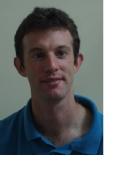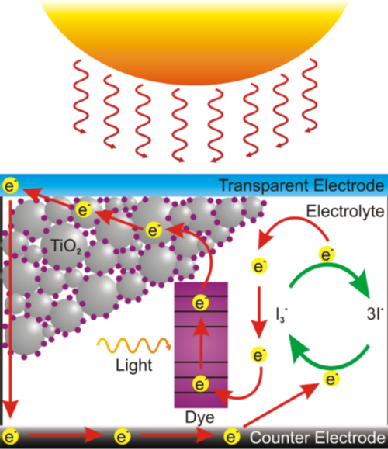Barak Aaronson
 I obtained both a BA in Chemistry and a B.Sc.Ed in Science Education from the Technion
I obtained both a BA in Chemistry and a B.Sc.Ed in Science Education from the Technion , Israel’s Institute of Technology in Haifa. I worked as a high school chemistry teacher for two years and as a part time research assistant at the Schulich Faculty of Chemistry
, Israel’s Institute of Technology in Haifa. I worked as a high school chemistry teacher for two years and as a part time research assistant at the Schulich Faculty of Chemistry in the Technion before I decided to deepen my knowledge in Analytical Chemistry which led me to the AS:MIT MSc programme at the University of Warwick.
in the Technion before I decided to deepen my knowledge in Analytical Chemistry which led me to the AS:MIT MSc programme at the University of Warwick.
During the first half of the year I was exposed to a wide variety of analytical techniques in a range of taught modules. Being particularly interested in Physical Chemistry, I was excited by the Electrochemistry and Sensors Module and by the work done here at Warwick on Electrochemical Imaging (Microscopy and Imaging Module). I've chosen to do my research project with the Electrochemistry and Interface group under the supervision of Prof. Patrick Unwin
under the supervision of Prof. Patrick Unwin
Title of my AS:MIT Project
High Resolution Functional Imaging of Surface Photoelectrochemical Processes: From Solar Cells to Photosynthesis.
Abstract of my Project
Scanning Electrochemical Microscopy (SECM) is an attractive method in the research of materials and biological sciences for the Functional Imaging of Surfaces. SECM’s main limitations lie in the size of the electrodes that can be fabricated and in the difficulty in separating topography and activity of the surfaces of interest. Recent techniques developed at Warwick’s Electrochemistry and Interface group show a high potential in overcoming these limitations. The two techniques are the Scanning Electrochemical Cell Microscope (SECCM) and the Intermittent Contact Scanning Electrochemical Microscope (IC-SECM) which measure topography and activity simultaneously using sub microscale tips as scanning probes. The aim of the project is to demonstrate how these techniques can be applied in the field of photoelectrochemical processes such as in Dye Sensitized Solar Cells (DSSCs) and Photosynthesis in plants. This would be achieved by fabricating a nanoscale dye sensitized solar cell and imaging local photoelectrochemical activities using the new techniques.
(SECM) is an attractive method in the research of materials and biological sciences for the Functional Imaging of Surfaces. SECM’s main limitations lie in the size of the electrodes that can be fabricated and in the difficulty in separating topography and activity of the surfaces of interest. Recent techniques developed at Warwick’s Electrochemistry and Interface group show a high potential in overcoming these limitations. The two techniques are the Scanning Electrochemical Cell Microscope (SECCM) and the Intermittent Contact Scanning Electrochemical Microscope (IC-SECM) which measure topography and activity simultaneously using sub microscale tips as scanning probes. The aim of the project is to demonstrate how these techniques can be applied in the field of photoelectrochemical processes such as in Dye Sensitized Solar Cells (DSSCs) and Photosynthesis in plants. This would be achieved by fabricating a nanoscale dye sensitized solar cell and imaging local photoelectrochemical activities using the new techniques.
More on Dye Sensitized Solar Cells (DSSC) and why high resolution imaging
Dye Sensitized Solar Cells (DSSCs), also known as Graetzel Cells, have attracted wide interest since Michael Graetzel et al. reported on the increase of photo to current efficiencies in the order of several magnitudes by introducing a mesoporuos TiO2 layer to the transparent working electrode, making the device a practical low cost alternative to Silicon based Solar Cells. While the increase of efficiency is attributed to the heterogeneity of the mesoporuos semiconductor layer, most measurements are based on averaging processes on a surface area whereas studies on localized photoelectrochemical activity are lacking.
(DSSCs), also known as Graetzel Cells, have attracted wide interest since Michael Graetzel et al. reported on the increase of photo to current efficiencies in the order of several magnitudes by introducing a mesoporuos TiO2 layer to the transparent working electrode, making the device a practical low cost alternative to Silicon based Solar Cells. While the increase of efficiency is attributed to the heterogeneity of the mesoporuos semiconductor layer, most measurements are based on averaging processes on a surface area whereas studies on localized photoelectrochemical activity are lacking.

General Scheme of a typical DSSC where trioodide acts as the dye regenerating redox couple
http://www.energyer.com/images/Dye_Sensitized_Solar_Cell_Scheme.png
The understanding of the mechanisms in an operating DSSC can help not only in developing
high efficiency devices but also in understanding the complex mechanisms involved in Nature’s version of photovoltaic processes: Photosynthesis. This is because DSSCs mimic Nature’s Photosynthesis in the sense that a complex chain of electrochemical reactions is triggered by electrons injected from excited light harvesting molecules.
